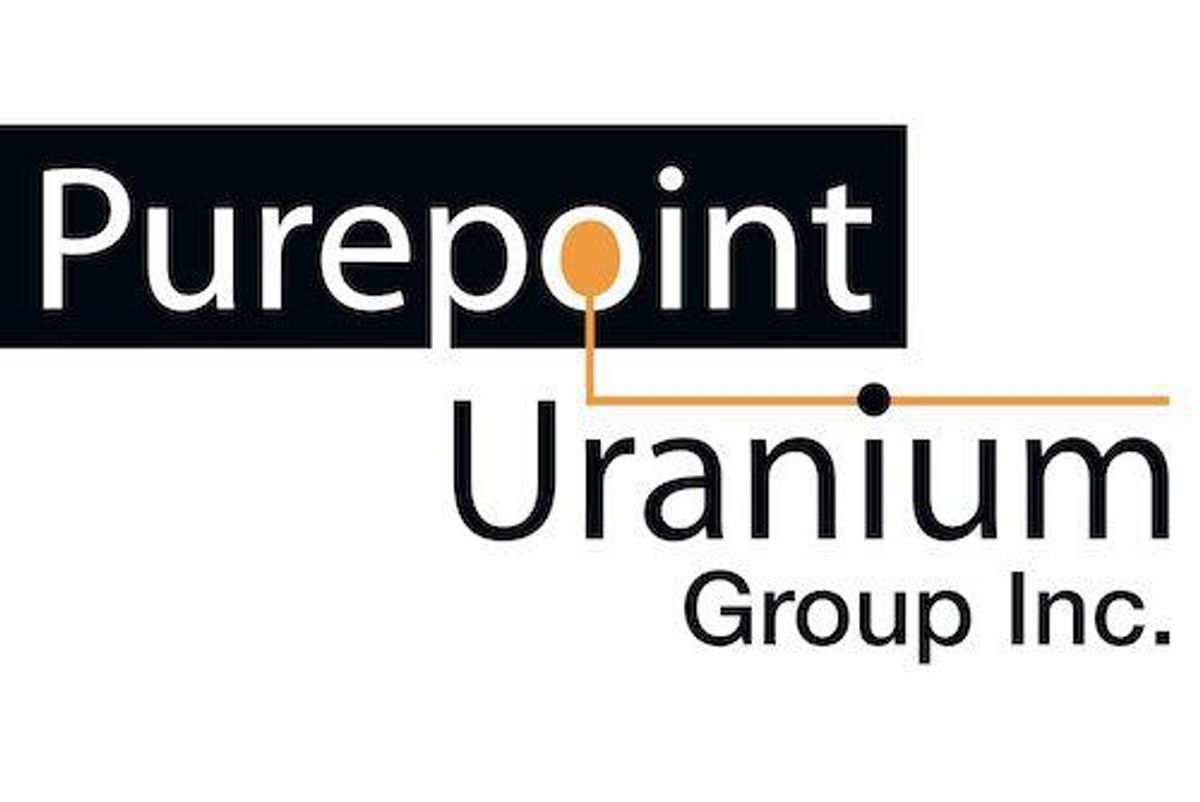
Skyharbour Resources Ltd. (TSX-V: SYH ) (OTCQX: SYHBF ) (Frankfurt: SC1P ) ("Skyharbour" or the "Company") is pleased to announce plans for fully-funded, upcoming drill programs at its co-flagship Russell Lake and Moore Uranium Projects in 2025 totalling approx. 16,000 18,000 metres in 35 45 holes representing the largest annual drill campaign ever carried out by the Company.
Russell Lake and Moore Projects Location Map:
https://www.skyharbourltd.com/_resources/images/SKY_RussellLake.jpg
At the 73,294 hectare Russell Lake Uranium Project ("Russell"), which is majority owned by Skyharbour as operator with minority joint-venture partner Rio Tinto Exploration Canada Inc. ("RTEC"), the Company is planning 10,000 - 11,000 metres of diamond drilling in 18 to 20 holes. This drilling will take place in multiple phases through the year, with mobilization and commencement planned within the next few weeks. Following the initial phase of drilling at Russell, Skyharbour plans to move the drill rig over to its adjacent 100% owned, 35,705 hectare, high-grade Moore Uranium Project ("Moore") to complete the next phase of drilling. The Company is planning to complete 5,000 – 7,000 metres of drilling at Moore throughout the year which will consist of 18 to 24 holes. The combined 2025 drill campaign across Skyharbour's core projects is fully funded with the geologists and drilling crews working out of the exploration camp at the Russell Lake Project, located along the road servicing Cameco's McArthur River Uranium Mine.
Jordan Trimble, President and CEO of Skyharbour, stated: "The upcoming commencement of drilling at Russell and Moore marks the start of our most ambitious annual drilling campaign we have ever carried out. The fully-funded 16-18,000-metre, multi-phased program will provide steady news flow throughout the year as we advance the projects using systematic and proven exploration methodologies to follow up on the success of the 2024 drilling. We are confident in the exploration upside at both projects given the high-grade mineralization in recent drilling along with the many highly prospective target areas hosting the geology necessary for high-grade uranium deposition. We also benefit from low-cost drilling and relatively shallow target depths at our Russell and Moore projects. Finally, Skyharbour will have plenty of additional news flow and catalysts from its prospect generator business consisting of partner companies advancing several of our other projects throughout the Athabasca Basin. This year, the Company is anticipating drilling and exploration at its partner-funded projects of Preston, South Falcon East, Falcon, South Dufferin, Highway and 914W."
Upcoming Winter Phase of Diamond Drilling at Russell Lake:
Skyharbour will soon commence its 2025 drilling program at the Russell Lake Project with plans for a first phase consisting of approx. 5,000 metres to follow up on notable recent exploration success and to test new targets developed by the geological team . The focus for this phase of drilling will be on the Fork and Sphinx targets within the broader Grayling target area, as well as the M-Zone Extension ("MZE") target and the Fox Lake Trail target. This initial winter program will consist of 10 to 12 drill holes, with most of the targets being road accessible and near the exploration camp, bringing the drill costs down. Further details on the drilling are forthcoming, and geochemical assay results are pending from the drilling recently carried out in late 2024 at Russell.
Russell Lake Project Target Areas:
https://www.skyharbourltd.com/_resources/images/20240110-MainTargetsRussellLake2024.jpg
The Fork target is a newly identified target to the southwest of the Grayling Zone and on-strike with Denison's M-Zone at their adjacent Wheeler River Project. Last year, high-grade uranium was discovered at the Fork target in hole RSL24-02, which returned a 2.5 metre wide intercept of 0.721% U 3 O 8 at a relatively shallow depth of 338.1 metres, including approx. 3.0% U 3 O 8 over 0.5 metres just above the unconformity in the sandstone (see news release dated July 19 th , 2024, titled: "Skyharbour Drills New Discovery at Russell Project with High-Grade Uranium Mineralization Up to 3.0% U 3 O 8 at Newly Identified Fork Zone"). This high-grade intercept is a new discovery which had very limited historical exploration due to a lack of reliable geophysical data and drill targets resulting from nearby powerline interference. The mineralization is open in most directions, including along strike, and will be a high-priority target for this drill program.
Grayling and Fork Target Areas:
https://skyharbourltd.com/_resources/images/2024-Fork-East-Grayling-Drill-Hole-Location-Map_NR.jpg
Skyharbour also plans to drill targets in the M-Zone Extension area along trend from the Grayling Zone and Denison's M-Zone, where historical drilling intersected basement-hosted uranium mineralization. More recent drilling by Denison in 2020 at the M-Zone encountered uranium mineralization with significant faulting, core loss, geochemical anomalies, and radioactivity encountered in other drill holes. Like the Grayling Zone, the mineralization at the MZE target is hosted by a graphitic thrust fault within a significant magnetic low. It is also noted that cross structures associated with Denison's Phoenix and Gryphon uranium deposits potentially trend onto the Russell Lake property within the M-Zone Extension target area, further enhancing the prospectivity of this target.
M-Zone Extension Drill Targets:
https://www.skyharbourltd.com/_resources/images/20240110-M-ZoneExtensionTargetsRussellLake.jpg
Upcoming Winter Phase of Diamond Drilling at Moore:
Skyharbour plans to conduct a second phase of drilling consisting of 3,000-3,500 metres in 9 to 12 holes at its Moore Project upon completion of the initial phase of drilling at Russell. Drilling at the Maverick Corridor will focus on identifying new trends and extensions within untested portions of its 4.7-kilometre strike length. Additional drilling is planned within the Maverick Main and East Zones to concentrate on refinement and expansion of the currently identified mineralized zones. The Maverick Main Zone is characterized by basement- and unconformity-hosted mineralization with a highlight interval drilled previously by Skyharbour of 6.0% U 3 O 8 over 5.9 metres at 265 metres depth, including 20.8% U 3 O 8 over 1.5 metres in hole ML-199. More recently, Skyharbour announced a drill result grading 4.61% U 3 O 8 over 5.0m starting at 265.5m downhole, including 3.0m of 7.30% U 3 O 8 (see news release dated July 11 th , 2024, titled: "Skyharbour Intersects 7.30% U3O8 over 3.0m within 5.0m of 4.61% U3O8 at High-Grade Moore Project"). Skyharbour is planning to drill test other regional targets at the project as well with further details on the drilling forthcoming. Additionally, geochemical assay results are pending from the drilling recently carried out in late 2024 at Moore.
Moore Uranium Project Regional Grid Targets Map:
https://skyharbourltd.com/_resources/maps/Moore-Lake-Property-Wide.jpg
Russell Lake Uranium Project Overview:
The Russell Lake Project is a large, advanced-stage uranium exploration property totalling 73,294 hectares strategically located between Cameco's Key Lake and McArthur River Projects, and adjoining Denison's Wheeler River Project to the west and Skyharbour's Moore Uranium Project to the east. The northern extension of Highway 914 between Key Lake and McArthur River runs through the western extent of the property and greatly enhances accessibility, while a high-voltage powerline is situated alongside this road. Skyharbour's acquisition of a majority interest in Russell Lake creates a large, nearly contiguous block of highly prospective uranium claims totalling 108,999 hectares between the Russell Lake and the Moore uranium projects. Several notable exploration targets exist on Russell, including the Grayling Zone, the M-Zone Extension target, the Little Man Lake target, the Christie Lake target, the Fox Lake Trail target and the newly identified Fork Zone target. More than 35 kilometres of largely untested prospective conductors in areas of low magnetic intensity also exist on the Property. Skyharbour is the operator and owns a majority interest in Russell Lake, having formed a joint venture partnership with RTEC at the project.
Moore Uranium Project Overview:
The Moore project consists of 12 contiguous claims totaling 35,705 hectares located 42 kilometres northeast of the Key Lake mill, 15 kilometres east of Denison's Wheeler River project, and 39 kilometres south of Cameco's McArthur River uranium mine. Unconformity-style, high-grade uranium mineralization has been discovered on the Moore Project along the Maverick conductive corridor. In addition to the Maverick zones, the project hosts other mineralized targets with strong discovery potential which the Company plans to test with future drill programs. The project is fully accessible via winter and ice roads, which simplifies logistics and lowers costs, while most of the property is accessible in the summer as well.
Qualified Person:
The technical information in this news release has been prepared in accordance with the Canadian regulatory requirements set out in National Instrument 43-101 and reviewed and approved by Serdar Donmez, P.Geo., VP of Exploration for Skyharbour as well as a Qualified Person.
About Skyharbour Resources Ltd.:
Skyharbour holds an extensive portfolio of uranium exploration projects in Canada's Athabasca Basin and is well positioned to benefit from improving uranium market fundamentals with interest in thirty-six projects covering over 614,000 hectares (over 1.5 million acres) of land. Skyharbour has acquired from Denison Mines, a large strategic shareholder of the Company, a 100% interest in the Moore Uranium Project, which is located 15 kilometres east of Denison's Wheeler River project and 39 kilometres south of Cameco's McArthur River uranium mine. Moore is an advanced-stage uranium exploration property with high-grade uranium mineralization in several zones at the Maverick Corridor. Adjacent to the Moore Project is the Russell Lake Uranium Project, in which Skyharbour is operator with joint-venture partner RTEC. The project hosts widespread uranium mineralization in drill intercepts over a large property area with exploration upside potential. The Company is actively advancing these projects through exploration and drilling programs.
Skyharbour also has joint ventures with industry leader Orano Canada Inc., Azincourt Energy, and Thunderbird Resources at the Preston, East Preston, and Hook Lake Projects, respectively. The Company also has several active earn-in option partners, including CSE-listed Basin Uranium Corp. at the Mann Lake Uranium Project; TSX-V listed North Shore Uranium at the Falcon Project; UraEx Resources at the South Dufferin and Bolt Projects; Hatchet Uranium at the Highway Project; CSE-listed Mustang Energy at the 914W Project; and TSX-V listed Terra Clean Energy at the South Falcon East Project. In aggregate, Skyharbour has now signed earn-in option agreements with partners that total to over $36 million in partner-funded exploration expenditures, over $20 million worth of shares being issued, and $14 million in cash payments coming into Skyharbour, assuming that these partner companies complete their entire earn-ins at the respective projects.
Skyharbour's goal is to maximize shareholder value through new mineral discoveries, committed long-term partnerships, and the advancement of exploration projects in geopolitically favourable jurisdictions.
Skyharbour's Uranium Project Map in the Athabasca Basin:
https://www.skyharbourltd.com/_resources/images/SKY_SaskProject_Locator_2024-11-21_v1.jpg
To find out more about Skyharbour Resources Ltd. (TSX-V: SYH) visit the Company's website at www.skyharbourltd.com .
"Jordan Trimble"
__________________________________
Jordan Trimble
President and CEO
For further information contact myself or:
Nicholas Coltura
Investor Relations Manager
Skyharbour Resources Ltd.
Telephone: 604-558-5847
Toll Free: 800-567-8181
Facsimile: 604-687-3119
Email: info@skyharbourltd.com
NEITHER THE TSX VENTURE EXCHANGE NOR ITS REGULATION SERVICES PROVIDER ACCEPTS RESPONSIBILITY FOR THE ADEQUACY OR ACCURACY OF THE CONTENT OF THIS NEWS RELEASE.
Forward-Looking Information
This news release contains "forward‐looking information or statements" within the meaning of applicable securities laws, which may include, without limitation, completing ongoing and planned work on its projects including drilling and the expected timing of such work programs, other statements relating to the technical, financial and business prospects of the Company, its projects and other matters. All statements in this news release, other than statements of historical facts, that address events or developments that the Company expects to occur, are forward-looking statements. Although the Company believes the expectations expressed in such forward-looking statements are based on reasonable assumptions, such statements are not guarantees of future performance and actual results may differ materially from those in the forward-looking statements. Such statements and information are based on numerous assumptions regarding present and future business strategies and the environment in which the Company will operate in the future, including the price of uranium, the ability to achieve its goals, that general business and economic conditions will not change in a material adverse manner, that financing will be available if and when needed and on reasonable terms. Such forward-looking information reflects the Company's views with respect to future events and is subject to risks, uncertainties and assumptions, including the risks and uncertainties relating to the interpretation of exploration results, risks related to the inherent uncertainty of exploration and cost estimates and the potential for unexpected costs and expenses, and those filed under the Company's profile on SEDAR+ at www.sedarplus.ca. Factors that could cause actual results to differ materially from those in forward looking statements include, but are not limited to, continued availability of capital and financing and general economic, market or business conditions, adverse weather or climate conditions, failure to obtain or maintain all necessary government permits, approvals and authorizations, failure to obtain or maintain community acceptance (including First Nations), decrease in the price of uranium and other metals, increase in costs, litigation, and failure of counterparties to perform their contractual obligations. The Company does not undertake to update forward‐looking statements or forward‐looking information, except as required by law.







